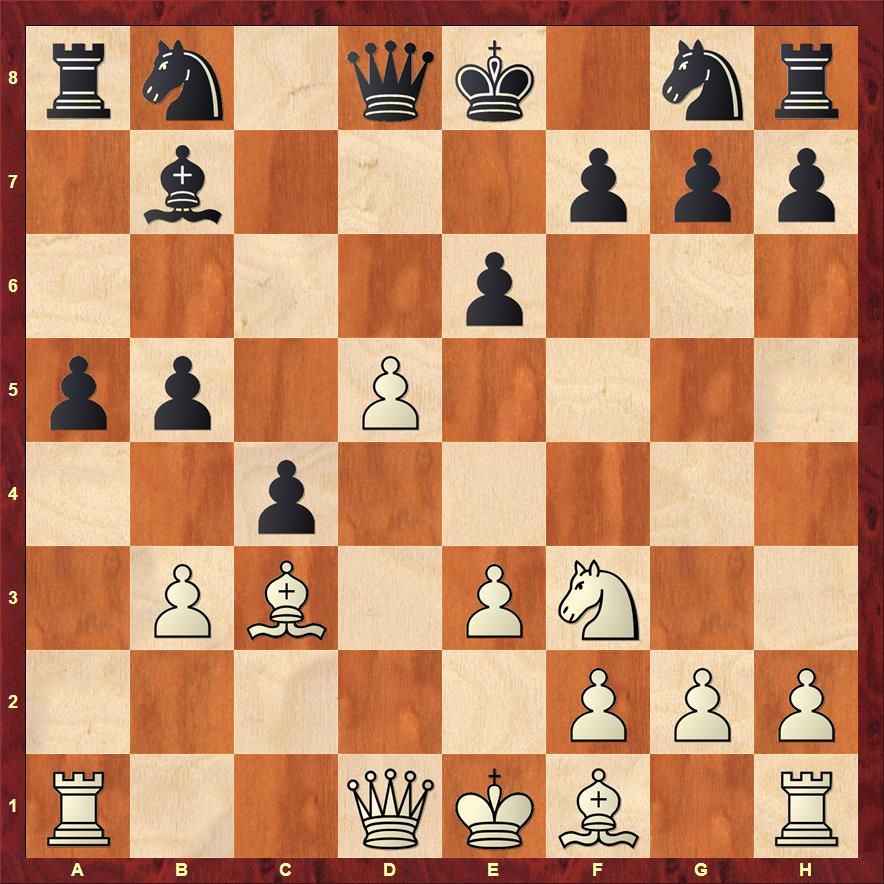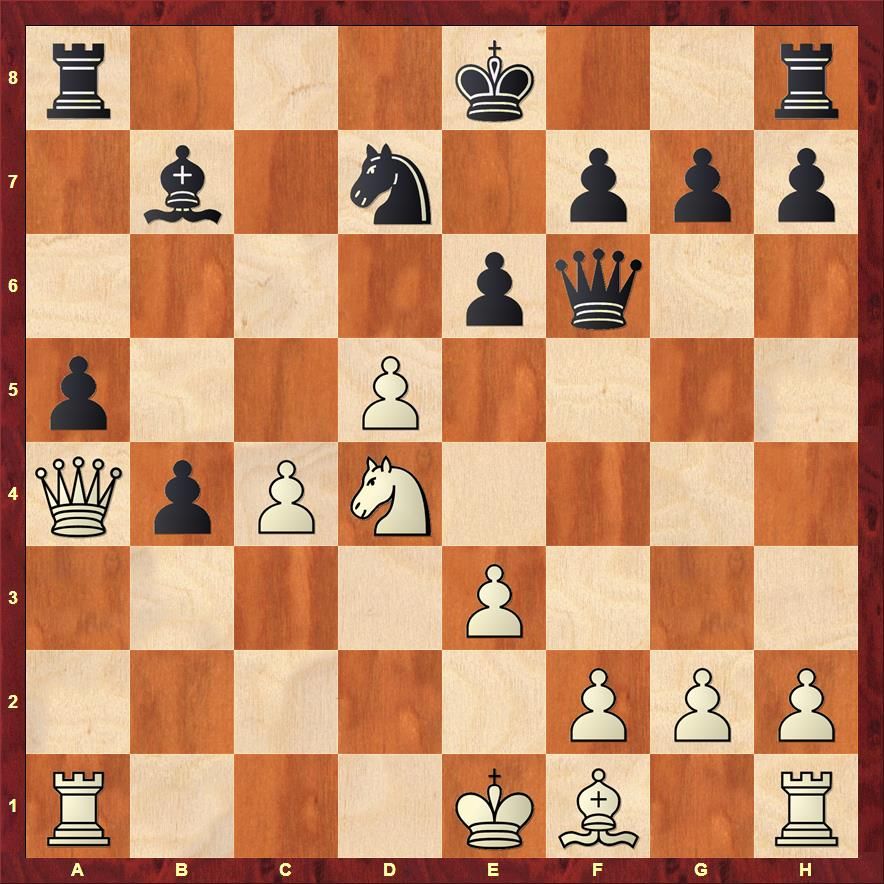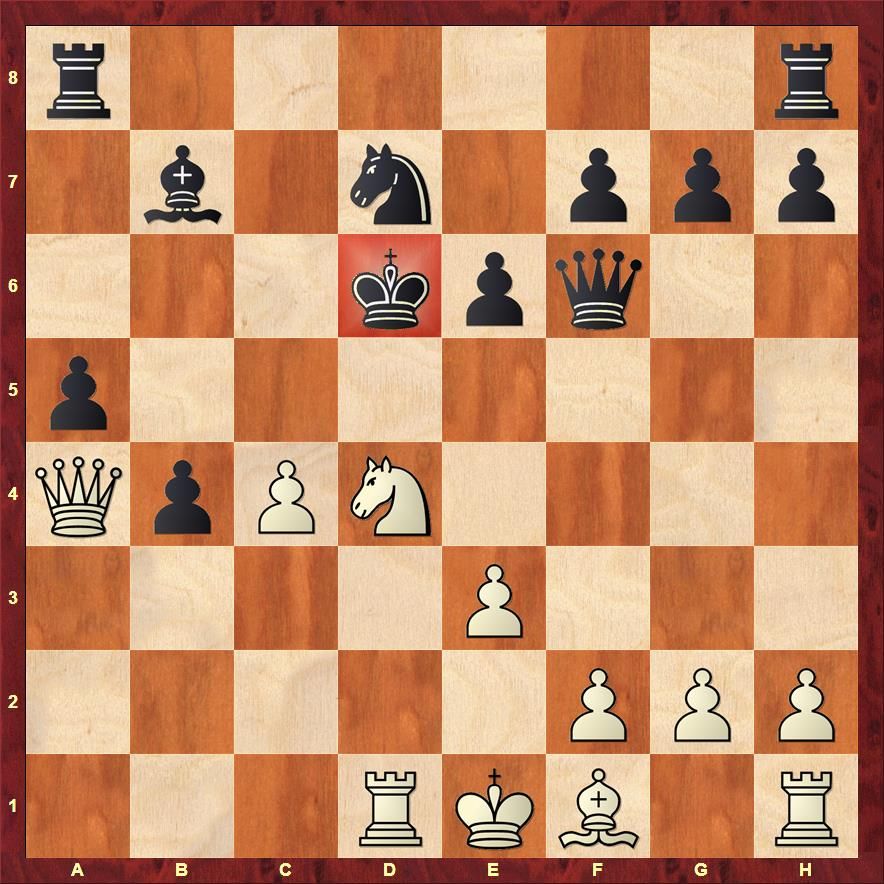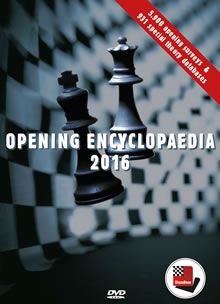Play the openings like a GM!
On the night before his last round game against a talented 10-year-old boy, Atul Dahale was faced with the eternal question: Which opening would give me maximum winning chances? A win would mean a second place and Rs.40,000. A loss would mean taking home almost nothing. In this pressure-filled situation an unexpected Romanian grandmaster came to his rescue. In this article Atul narrates the process of how he was able to make one of the best opening preparation of his chess career.
It was the last round of the Mineral FIDE Open Rating tournament in Vadodra. The tournament where I had started as the sixth seed (my rating was 2100), had gone extremely well and I had good chances of finishing second and winning the prize of Rs. 40,000. A lot was at stake on the last round and I was playing the talented 10-year-old D.Gukesh (2061). I had the white pieces and I decided to have a look at what my opponent plays and prepare against it. An initial check of Gukesh's repertoire revealed that the boy liked to play the triangle variation in the Slav.

The moves 1.d4 d5 2.c4 e6 3.Nc3 e6 denotes the triangle system. White has a few ways to play against this. 4.e4 leads to the sharp lines of the Marshall Gambit. 4.e3 is solid but after 4...f5 Black gets a decent version of the Stonewall because the bishop on c1 is shut behind e3. The other option I had was 4.Nf3 which leads to the Noteboom Variation after 4...dxc4.
It was already 11 p.m. and the last round was scheduled to begin at 9 a.m. in the morning. I really didn't want to indulge in deep preparation and get tired for the crucial game. The Opening Encyclopaedia 2016 had just been released a few days ago and I had bought it from the ChessBase India shop. It was time to put this product to use.
The important thing to know first when using Opening Encyclopaedia is the ECO code of the opening that you are trying to search. Of course, I am not well versed with these codes but a simple trick solves the issue. I put the moves 1. d4 d5 2. c4 e6 3. Nc3 c6 on the board and pressed Ctrl+S. The following dialogue box comes up:



Noteboom Variation: a fresh look from White’s perspective
By Dorian Rogozenko
Semi-Slav D31: The variation being examined begins with the moves 1.d4 d5 2.c4 c6 3.Nf3 e6 4.Nc3 dxc4 5.e3 b5 6.a4 Bb4 7.Bd2 a5 8.axb5 Bxc3 9.Bxc3 cxb5 10.b3 Bb7 11.d5 (repertoire for White)

11...Nf6 12.bxc4 b4 13.Bxf6
The time factor is essential. By exchanging his bishop White drives away his opponent's queen from protecting the king. The entire concept of this opening line is connected with creating an attack against the black king.
13...Qxf6 14.Qa4+ Nd7
Starting with 14...Ke7 makes no difference, since after 15.Nd4 e5 16.Nb3 Black will have to develop the knight on d7 anyway.
15.Nd4

15...e5
Before playing ...Ke8-e7 Black chases away his opponent's powerful knight. The immediate 15...Ke7 allows the powerful pawn sacrifice 16.d6+! Kxd6 17.Rd1:

16.Nb3 Ke7 17.Be2

Black must take control over the square c5 and choose between A. 17...Rhc8 and B. 17...Qd6. Other moves are considerably weaker. For instance 17...Qb6 which has the same purpose is just bad, since in contrast to 17...Qd6 from b6 the queen has considerably less influence in the centre. After 17...Qb6 White achieves a big advantage with 18.Bg4, pointing out the fact that the square b6 is no longer available for the knight.
A. 17...Rhc8 18.0-0 Nc5
The logical follow-up to the previous move. 18...Qd6 is dubious here, since besides the standard 19.f4, it allows 19.Nxa5! and after 19...Rc5 White has 20.Nxb7, attacking the queen. For 18...Qb6 see Blatny,P - Reefat,B 0-1.
19.Nxc5 Rxc5 20.f4

20...e4
Trying to keep the centre closed is the natural answer. White cannot attack the pawn with 21.Qc2 because now the c-pawn is pinned and Black has 21...Bxd5. In practice White usually plays 21.Rad1, to which Black should reply 21...Kf8! 22.Rd4 Re8 with a complicated position, which requires some high level games for a precise evaluation.
21.Qd1!

21...Kd6
Another natural reaction from Black. Anticipating the endgame, the second player centralises the king. Now the game Naumann,A - Galkin,A ½-½ continued 22.Qd4 Qxd4 23.exd4 Rc7 with a double-edged endgame, where the players agreed to a draw very soon. However, White has a more ambitious solution.
22.Qb1!

B. 17...Qd6

18.f4
The most energetic answer, preventing the opponent's intention to play 18...Nc5.
18...Rhc8
Again Black prepares the move ...Nd7-c5. The alternatives are weaker, see Babula,V - Blecken,V 1-0.
19.0-0 Nc5
For alternatives: Wang Lei - Stepovaia Dianchenko,T 1-0.
20.Nxc5 Rxc5

White would now be happy to play 21.Qc2, attacking the h7-pawn and at the same time creating the strong threat Qc2-e4. Unfortunately, after 21.Qc2 the pawn on c4 is pinned and Black has 21...Qxd5, with a large advantage.
In the game Shulman,Y - San Segundo Carrillo,P 1-0 White played 21.Rad1, after which Black rightly closed the centre with 21...e4. Then White entered an endgame with 22.Qa1 Kf8 23.Qe5 Qxe5 24.fxe5 and won after 24...Kg8 25.Rf4. However, it is worth noticing that when the black queenside pawns are not blockaded, such endgames are very dangerous for the first player. After the exchange of queens Black must start to advance his pawns at once with 24...a4 (instead of 24...Kg8) and it is White who is in troubles, see Miton,K - Krasenkow,M 0-1.
The main drawback of 21.Rad1 is that White decides too early the position of his queen's rook. It might well be needed on f1, or even on a1 in order to fight against the opponent's connected passed pawns. In the diagram position, the ideal for White is to combine several ideas, such as finding targets for attack in Black's position, opening files in the centre and eventually switching the queen to the kingside for a direct attack against the black king. At the same time it is vital for White to keep the black queenside pawns blockaded for as long as possible. The most promising move for White in the diagram position is
21.Rf3!
with the intention to gain time for doubling rooks on the f-file. We'll see that there are other ideas behind 21.Rf3.
21...e4
The natural reaction. 21...Kf8 loses at once in view of 22.fxe5 Qxe5 23.Qd7. The only alternative seems to be 21...exf4. Then after 22.Rxf4 followed by 23.Raf1 White has a strong initiative.
22.Rh3
Finding another target for attack. This is another idea of the previous move - on the third rank the rook can use the g- and h-files.
22...h6
Now it might appear that White's play has gone nowhere. But the rook continues its way:
23.Rh5!

It turns out that in such a pawn formation from h5 the rook has the most influence on the centre. Besides threatening 24.Re5, the rook also controls square f5, preventing the advance ...f7-f5.
In fact after 23.Rh5 Black has serious problems to prevent the loss of his e4-pawn. Instead he should probably give it up and try somehow to prepare the advance of the queenside pawns. However, with the queens on board the vulnerable position of the black king will always play its role. The analysis show that White has very good prospects of emerging victorious from all complications. See Analysis 21.Rf3.
Conclusion: After both main moves 17...Rhc8 and 17...Qd6 there are many hidden resources for White. The variations above show that the first player has plenty of ideas and although for a final conclusion they still need to be tested in practice, it is clear that the positions arising in the variation under examination contain a lot of attacking potential for White.

[Site "?"]
[Date "2016.05.05"]
[Round "9.3"]
[White "Atul, Dahale"]
[Black "Gukesh, D."]
[Result "1-0"]
[ECO "D31"]
[WhiteElo "2100"]
[BlackElo "2061"]
[Annotator "Atul Dahale"]
[PlyCount "107"]
10-year-old rising talent Gukesh D. I opened with} 1. d4 d5 2. c4 e6 3. Nc3 c6
{During my preparation I was a bit confused whether to go for something solid
or sharp. I decided to go for the latter.} 4. Nf3 (4. e4 dxe4 5. Nxe4 Bb4+ 6.
Nc3 {Playing in Carlsen style was also appealing. But I knew my opponent plays
Noteboom and had prepared an interesting line on the night before the game.})
4... dxc4 5. a4 Bb4 6. e3 b5 7. Bd2 a5 8. axb5 Bxc3 9. Bxc3 cxb5 10. b3 Bb7 {
Until this point we both played quite fast. The next move which I made
suprised him.} (10... b4 11. Bxb4) 11. d5 $5 {This is the move that I prepared
with the help of Rogozenco's article in the Opening Encyclopaedia 2016.} (11.
bxc4 b4 12. Bb2 Nf6 13. Bd3 {is the usual continuation.}) 11... Nf6 12. Bxf6
Qxf6 13. bxc4 b4 (13... bxc4 14. Bxc4 exd5 15. Bb5+ Bc6 16. Nd4 Bxb5 17. Nxb5
O-O 18. O-O {The position should be round about even. Although here too there
is a lot to play for.}) 14. Qa4+ Nd7 (14... Ke7 15. Nd4 Nd7 16. d6+ $1 Kxd6 17.
Rd1 $16 {Leads to a strong attack.}) 15. Nd4 {Usually in this position Black
has two options Ke7 or first e5 and then Ke7. My opponent had already consumed
a lot of time and I was ahead on the clock. With all the pressure he made a
mistake.} Bc8 $2 {After this White wins a pawn. Moreover his position is
excellent. The only problem White needs to take care of is Black's b-pawn
which is ready to roll.} (15... e5 16. Nb3 Ke7 17. Be2 {is a double edged
position.}) (15... Ke7 16. d6+ Kxd6 17. Rd1 {With attacking chances.}) 16. Qc6
Rb8 17. Rxa5 $1 (17. dxe6 {was tempting} fxe6 18. Rxa5 ({Trying to grab the
pawn with} 18. Qxe6+ $2 {will be a mistake} Qxe6 19. Nxe6 b3 $1 $11 {Black
will have good piece activity.}) 18... e5 19. Qxf6 gxf6 20. Nb3 {I didnt go
for this because I wanted to keep queens on the board.}) 17... O-O 18. Be2 $1 {
Simple and strong. White wants to castle and bring his all pieces into the
game.} ({Again} 18. dxe6 {is possible but I thought why to give him easy play
when he is down on time.} b3 19. exd7 (19. exf7+ Qxf7) 19... Qd8 20. Nxb3 Bxd7
21. Qd6 Rxb3 22. Ra1 Rb2 {Black has a lot of initiative for his sacrificed
pawns.}) 18... Qg6 19. O-O b3 20. Raa1 (20. dxe6 fxe6 21. Rb5 $16 {was a
better choice.}) 20... Nf6 $1 21. Qa4 $2 Bd7 (21... exd5 $1 22. Nxb3 Bh3 23.
Bf3 Bd7 24. Qa3 dxc4 25. Nd4 {would have been about equal.}) 22. Nc6 Bxc6 $6
23. dxc6 b2 24. Rab1 Ne4 (24... Rfc8 25. c7 Rxc7 26. Rxb2 Rf8 27. Rd2 $16) 25.
c7 Rbc8 26. Rxb2 Rxc7 27. Qa5 Rc5 28. Rb5 Rcc8 {White is a clear pawn up, with
bishop against knight he clearly stands better in this position.} 29. c5 Qf6
30. Bf3 Qg6 31. Qb4 Ng5 32. Bb7 Rcd8 33. Qb1 (33. h4 $1 {I missed this move.}
Nh3+ 34. Kh2 Qd3 35. Qb1 Nxf2 36. Qxd3 Nxd3 37. c6 $18) 33... f5 34. h4 Ne4 (
34... Nf7 35. c6 Nd6 36. c7 Rde8 37. Rc1 $18 {and the pawn should decide the
outcome of the game.}) 35. Bxe4 fxe4 36. c6 Qg4 37. c7 Rc8 38. Rb8 e5 39. Qb3+
Kh8 40. Rxc8 Qxc8 (40... Rxc8) 41. Qc4 h6 42. Rc1 Qf5 43. f3 $6 {Time pressure.
} (43. c8=Q Qxf2+ 44. Kh1 Qxh4+ 45. Qh3 $18) 43... Rc8 44. Qxe4 {we both were
in time pressure so I decided to liquidate into Pawn up rook ending which
should be easy to win.} Qxe4 45. fxe4 Kg8 46. h5 {Restraining move.!} Kf7 47.
Rc6 Ke7 48. Kf2 Kd7 49. Rg6 Rf8+ 50. Kg3 Rf7 51. Rc6 Kc8 52. Kg4 Rf2 53. g3 Rf7
54. Rc5 {And Black resigned. After Black's e-pawn falls, it's impossible for
him to hold the position.} 1-0



In chess, braving the gap often leads to disaster after a few moves. We should be able to avoid things going so far. The ChessBase Opening Encyclopaedia offers you an effective remedy against all sorts of semi-digested knowledge and a means of building up a comprehensive and powerful repertoire. Complete: the Opening Encyclopaedia 2016 features complete coverage of all opening areas on a single DVD and constitutes the best possible introduction to opening training. Well informed: many renowned specialists in their own area of expertise have contributed to this Chess Base Opening Encyclopaedia, e.g. Avrukh, Berg, Gormally, Krasenkow, Kritz, Kuzmin, Marin, Moskalenko, Postny, Ribli, Rogozenko, Stohl, Sumets and Szabo. Unique: club players regularly find in ChessBase Magazine’s up-to-date openings articles (introductory text + annotated games) exciting ideas for their repertoire. You can now find brought together on this single DVD all 931 articles from over 15 years of ChessBase Magazine (up to and including the February 2016 issue)! Crystal clear: for each of the 500 openings (according to the ECO-code) there is at least one opening survey; total number now is 5900. Out of those, more than 350 have been up-dated for this new edition of the encyclopaedia.
Inexhaustible: database with over 5.6 million, more than 84 000 games are annotated.
- over 5.6 million games, all featuring ECO codes
- more than 84 000 of them annotated
- 5900 opening surveys, many of which have been brought up to date
- access to the games via the large opening key
- 931 specialised theory databases
- large opening book of all the games to give you a quick overview and statistics
- the ChessBase Reader 2013 for access to the whole content of the DVD
